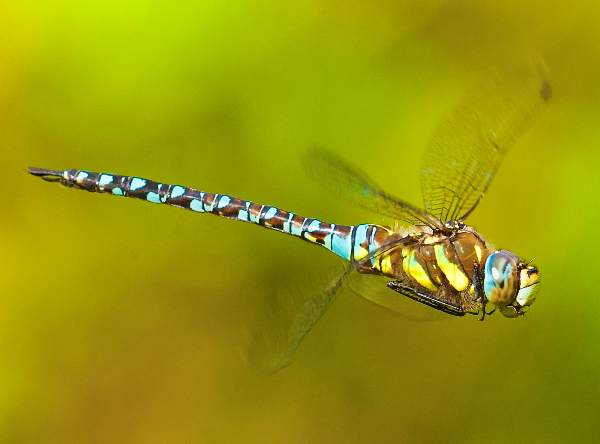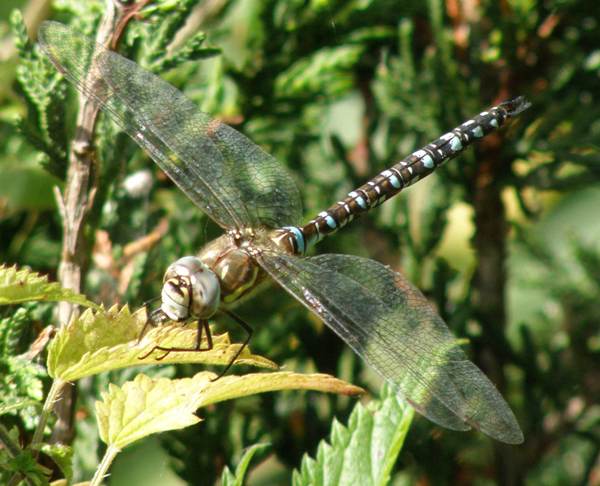Aeshna juncea - Common Hawker
Phylum: Arthropoda - Class: Insecta - Order: Odonata - Family: Aeschnidae

Description
The Common Hawker is a very large (typically 7.5cm long), fast-flying dragonfly with yellow costa (leading edges of wings). The male is predominantly black with paired pale blue spots and yellow flecks along its body; its eyes are dark blue, and there are pale yellow-and-blue patches on its thorax. Females have browner bodies with yellowish spots and their eyes are brown rather than blue.
Distribution
The Common Hawker is common in Ireland, western England, Wales and Scotland; it is rarely if ever seen in the south and east of England.
Habitat
This dragonfly favours upland acidic bogs and heathland, where it breeds in permanent pools and lakes; however, this species has also been recorded quite often from garden ponds in neutral- or acid-soil areas.

Lifecycle
Common Hawkers can be seen on the wing from Late June through to October. The female lays her eggs in summer and early autumn, stabbing her ovipositor into submerged marginal vegetation. The eggs lie dormant through the winter and then hatch in the following spring.
Common Hawker nymphs (naiads) take two, three or sometimes four years to reach maturity, during which time they feed on small invertebrates including the nymphs and larvae of other aquatic insects as well as tadpoles and, when they can catch them, newborn newts (known as efts).
Acknowledgements
This page includes pictures kindly contributed by James Wainscoat.
Excited at the prospect of flyfishing? So are we, and we're pretty sure you would find the Winding River Mystery trilogy of action-packed thrillers gripping reading too. Dead Drift, Dead Cert, and Dead End are Pat O'Reilly's latest river-and-flyfishing based novels, and now they are available in ebook format. Full details on our website here...
Buy each book for just £4.96 on Amazon...
Please Help Us: If you have found this information interesting and useful, please consider helping to keep First Nature online by making a small donation towards the web hosting and internet costs.
Any donations over and above the essential running costs will help support the conservation work of Plantlife, the Rivers Trust and charitable botanic gardens - as do author royalties and publisher proceeds from books by Pat and Sue.
